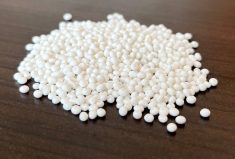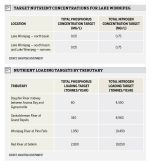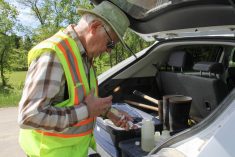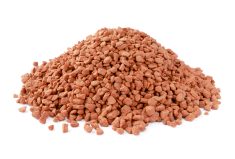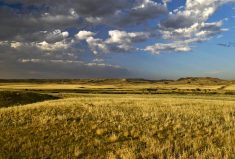Chilly? Just throw a few more cattails on the fire.
The La Salle Red-boine Conservation District (LSRBCD) Pelly’s Lake back-flood project has grown in scope from water retention to cattail harvest, phosphorus reduction and biomass production.
“The cattails used to be confined to the edges of the lake, but in the last few years we’ve had so many wet cycles they have spread right across the little valley this area is in,” said Justin Reid, LSRBCD district manager. “It’s pretty much a solid mass of cattails throughout right now.”
Read Also

Mazergroup’s Bob Mazer dies
Mazergroup’s Bob Mazer, who helped grow his family’s company into a string of farm equipment dealerships and the main dealer for New Holland machinery in Saskatchewan and Manitoba, died July 6 from cancer.
As part of the project’s water retention goal, more water will be added to the low-lying area near Holland using soon-to-be-installed water control structures. Reid said this will likely happen next year, adding increasing water levels may cause some slight dieback in cattail growth.
“But this is already pretty much the ideal environment for cattails,” he noted, adding previous attempts to drain the area for hay and pasture land were unsuccessful as cattails continued to choke the area.
The idea to use Pelly’s Lake cattails as biomass fuel came via the involvement of the International Institute for Sustainable Development, which has already used a Netley-Libau Marsh pilot project to show harvesting cattails can prevent phosphorus from entering waterways after the plants die in the fall and generate biomass.
In total, 640 acres will be flooded, cattails will then act as natural sponges for phosphorus, before being harvested for fuel. A bale of harvested cattails contains roughly four pounds of phosphorus.
The reedy plants will be harvested by Oak Ridge Colony in the fall, after water is released and when the phosphorus levels have peaked in the plants, Reid said. Different harvest methods are being looked at currently, including swathers, or sickle harvesters towed by small vehicles, or modified headers.
After harvest, the cattails will be pressed into small cubes able to fuel Oak Ridge Colony stokers.
“It will be a good heat source for the colony for many years to come,” the district manager said.
And the buck doesn’t stop there. Ash from cubed cattails retains 88 per cent of its total phosphorus and is then used as fertilizer.
“This basically continues the cycle and the phosphorus stays put, instead of being taken away on the water course and ending up in Lake Winnipeg,” said Reid. It will also reduce the colony’s reliance on coal.
It is also hoped that the retention area will improve animal and bird habitat.
Reid stressed that rural municipalities struggling with water issues can look to their local conservation districts for assistance. He noted LSRBCD is also working on other water retention projects.
The RM of Dufferin has worked with LSRBCD to develop a Wetland Tax Credit, worth $40 per acre, encouraging landowners to maintain or restore wetland areas in an effort to stymie flooding through water retention.






